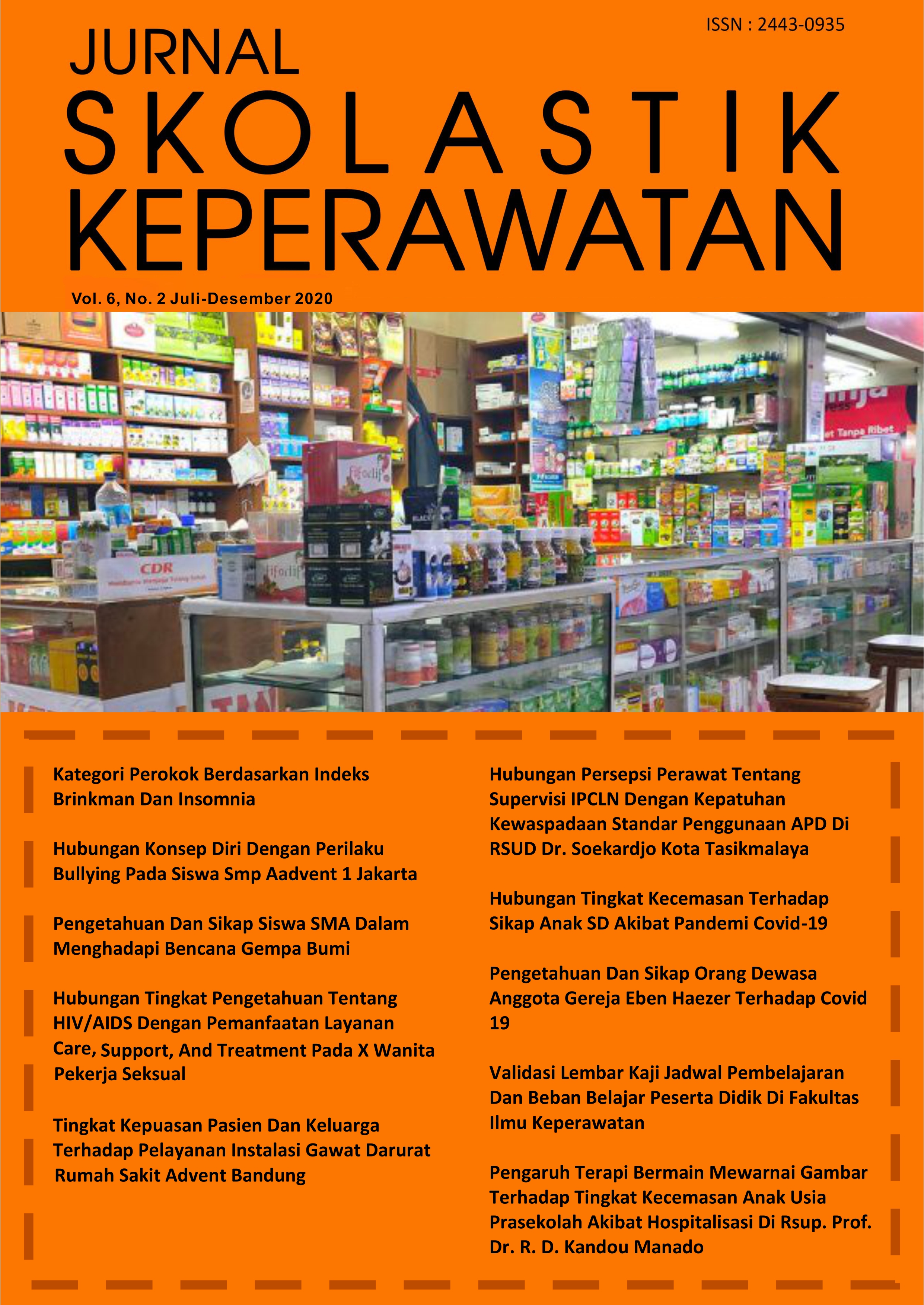THE VALIDATION OF MEASUREMENT TOOLS FOR NURSING STUDENTS’ COURSE LOAD AND SCHEDULING IN SCHOOL OF NURSING
Keywords:
Beban belajar, Jadwal pembelajaran, Lembar kaji, Mahasiswa Keperawatan, ValidasiAbstract
Evaluation of the learning process can shape the learning experience of students. This study introduces the validation process of a design measuring instrument aspects of the learning experience process experienced by nursing students. Methods: This study is a validation study tool which is carried out using the descriptive correlation method. The population that is the target of this research is 70 students from semester 4 to semester 8 who are registered as regular students in the Undergraduate Nursing Study Program. Samples were recruited accidentally, namely among the student population who were working on class schedules which were later obtained by 39 respondents. Results: The design of the study sheet learning schedule and learning load for nursing students in a good category, namely the coefficient value α = 0.927 with p value <0.05. Conclusion: The reliability value of the review sheet is in good category. Discussion: Continuous or periodic measurement is needed as an effort to improve the learning experience process of nursing students in nursing education institutions in Indonesia.
Keywords: Evaluation tool, Course load, Scheduling, Nursing students, Validation
Downloads
References
Biggs, John and Tang, Catherine (2011). Teaching for quality learning at university: What the student does. McGraw-Hill House, Shoppenhangers Road, Maidenhead Berkshire, England.
Hsu, Li-ling dan Hsieh, Suh-Ing. Development and psychometric evaluation of the competency inventory for nursing students: A learning outcome perspective. Nurse Education Today. Volume 33, Issue 5, May 2013, Pages 492-497.
Mizhquiri, Lesley, "White Paper: The Effects of Block Scheduling and Traditional Scheduling on High School Student Achievement" (2019). Education Department. 1. https://digitalcommons.dartmouth.edu/educ17whitepapers/1
Rettig, M. D. (2019). The effects of block scheduling. Alexandria, VA: The School Superintendent Association. Retrieved from (Rettig, 2019)
R. Cant and L. McKenna. Assessing preregistration nursing students’ clinical competence: A systematic review of objective measures. International Journal of Nursing Practice 2013; 19: 163–176
Taber, S. Keith. The Use of Cronbach’s Alpha When Developing and Reporting Research Instruments in Science Education. Res Sci Educ (2018) 48:1273–1296. DOI 10.1007/s11165-016-9602-2.
Takase M, Teraoka S, Miyakoshi Y, Kawada A. A concept analysis of nursing competence: a review of international literature. Nihon Kango Kenkyu Gakkai Zasshi. 2011;34:103-9. DOI:10.15065/jjsnr.20110404011
XV Wu, K Enskär, CCS Lee, W Wang. A systematic review of clinical assessment for undergraduate nursing students. Nurse Education Today. Volume 35, Issue 2, February 2015, Pages 347-359.
Zepeda, S. J., & Stewart Mayers, R. (2006). An analysis of research on block scheduling. Review of Educational Research, 76(1), 137–170. https://doi.org/10.3102/00346543076001137
Downloads
Published
How to Cite
Issue
Section
License
Copyright (c) 2021 Karolina Tupen, Samuel M. Simanjuntak

This work is licensed under a Creative Commons Attribution-NonCommercial-ShareAlike 4.0 International License.
Authors who publish with this journal agree to the following terms:
- Authors retain copyright and grant the journal right of first publication with the work simultaneously licensed under a Creative Commons Attribution-NonCommercial-ShareAlike 4.0 International (CC BY-NC-SA 4.0) that allows others to share the work with an acknowledgment of the work's authorship and initial publication in this journal.
- Authors are able to enter into separate, additional contractual arrangements for the non-exclusive distribution of the journal's published version of the work (e.g., post it to an institutional repository or publish it in a book), with an acknowledgment of its initial publication in this journal.
- Authors are permitted and encouraged to post their work online (e.g., in institutional repositories or on their website) prior to and during the submission process, as it can lead to productive exchanges, as well as earlier and greater citation of published work (See The Effect of Open Access).









